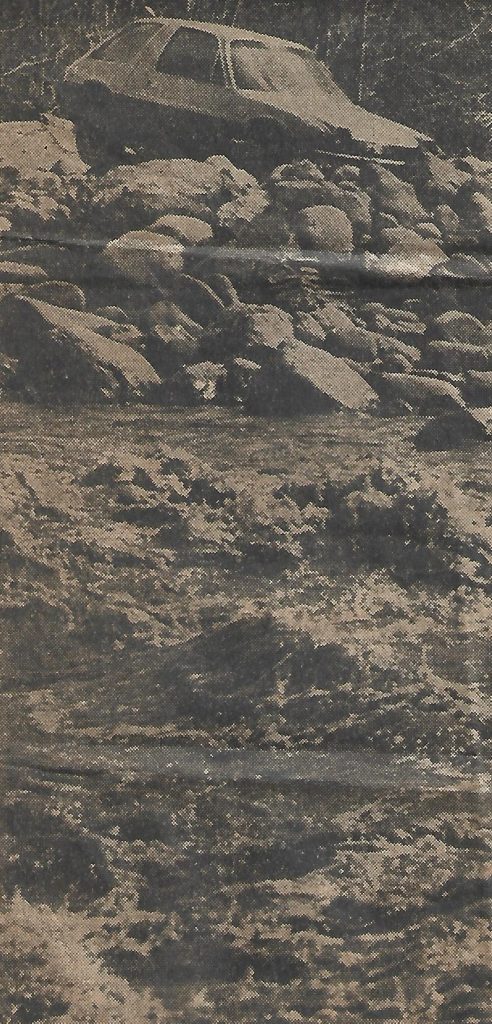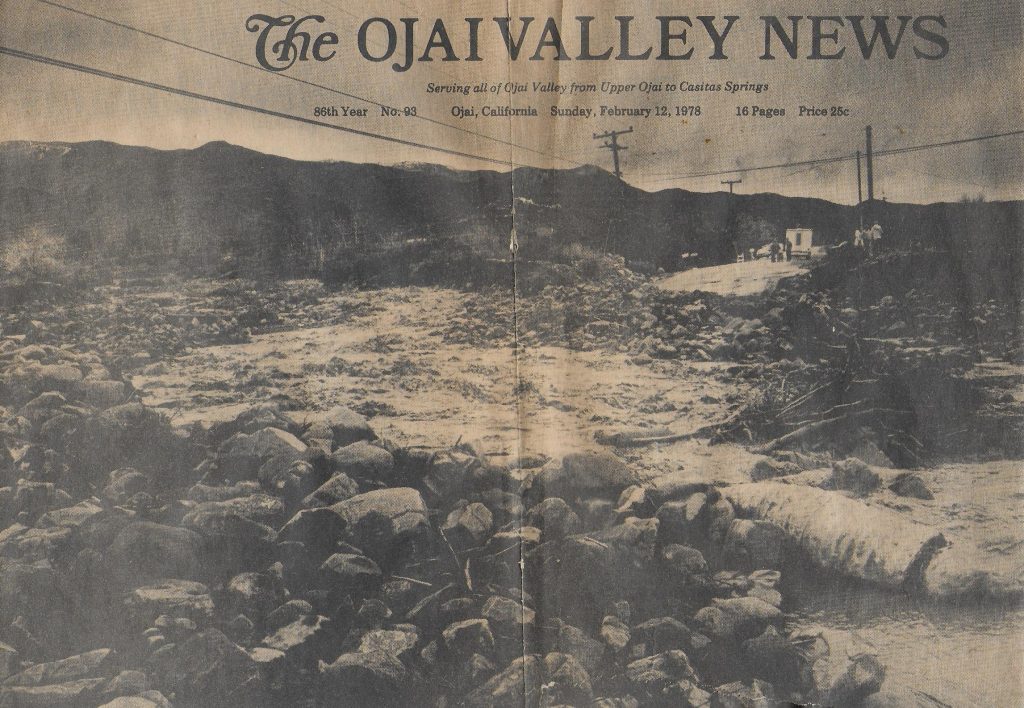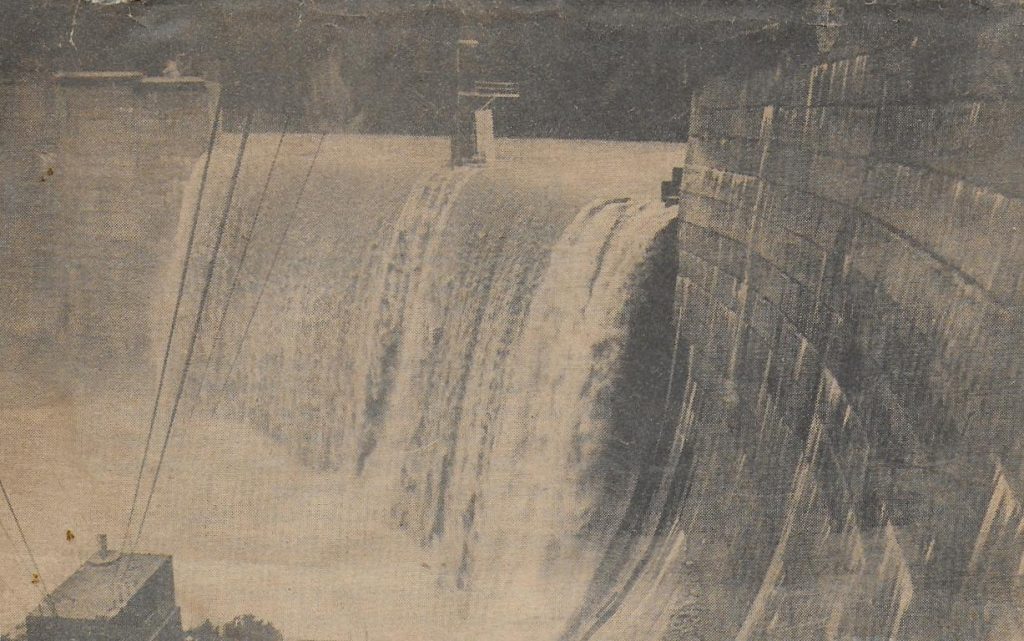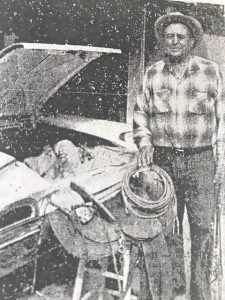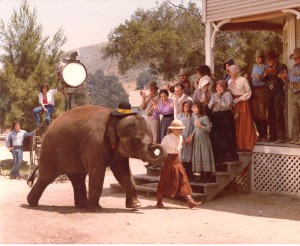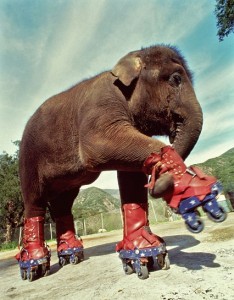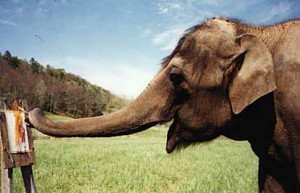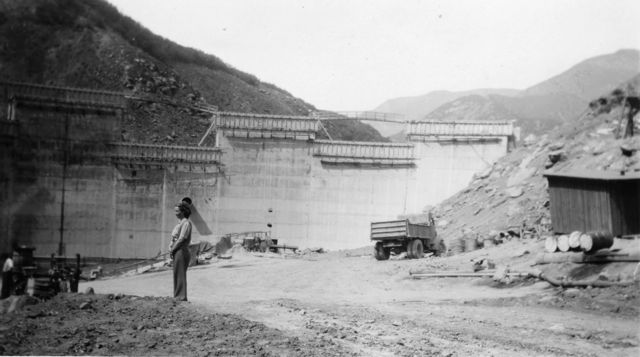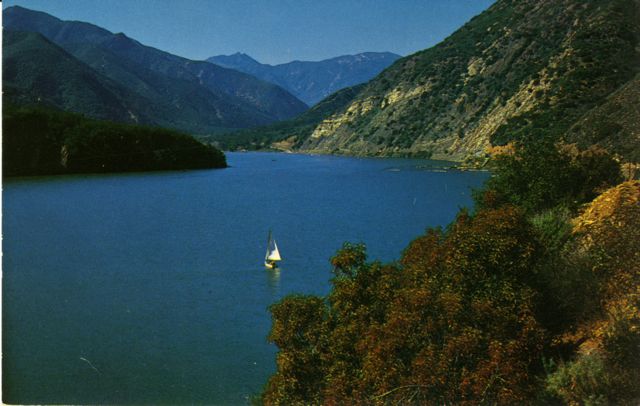The following article first appeared on the front page of the Sunday, February 12, 1978 edition of the “Ventura County Star Free Press.”
Creek takes ranger’s home
‘We just got out of there in time’
By Gregg Zoroya
“I know I’m not afraid of the river now. I was before. Before, it looked like it was something out of the Grand Canyon. It looked like the Colorado River,” said Drew Mashburn, 26, county ranger for the Matilija campground area.
“Before” was the early moments of Friday morning when Mashburn and his 24-year-old wife Gene-Marie were driven from their home alongside the swollen banks of the creek.
As they turned from the home, wet and cold, with belongings that consisted of little more than the clothes they were wearing and escaped to a neighbor’s house, the raging torrent of Matilija Creek broke out and engulfed most of their house at 2088 Matilija Canyon Road.
In the process of destroying the house, the waters swept away the Mashburn car, pickup and cab-over camper.
A weakened roadside on which their remaining vehicle was parked — a county car containing camera equipment and other family valuables — collapsed and dropped the car into the creek later that morning.
“We lost the front porch, we lost the front screened porch, we lost the kitchen, the dining room. We also lost the living room and the beautiful stone fireplace,” said Mashburn.
The house, remains of which sit precariously on the edge of the creek, is county property and was valued at $40,000 said Paul Lamp, county parks superintendent.
Besides the vehicles, the Mashburns lost much of their furniture — including everything from dining and bedroom sets to refrigerator, stove, television and stereo, and an antique victrola.
Mashburn declined to put a dollar estimate on the property that is gone, until his insurance company can estimate the damage. But he anticipates a loss of several thousand dollars.
Much of the furniture is still under payment, said Mashburn.
“It’s like paying for a dead horse.”
With the stream 100 feet from their house and behind a thick five-foot-high earthen dike, the Mashburns tried to get some sleep late Thursday night.
Mashburn planned to keep checking the creek bank through the night.
“It was my opinion, that it would eat away a little at a time, and if I saw it get ready to go through the dike I’d move my car up on the road,” he said.
“We had trouble sleeping because of the sound of the roaring river. It turned out that the reason it was so loud was because it was right against our door.”
The creek had broken the dike several hundred feet upstream, across from the Paul G. Robinson home at 3080 Matilija Canyon Road. This was at 11:30.
Mashburn later guessed that when the creek broke the dike it shifted its course further up the bank with the Mashburn home right in its path.
At about 12:30 a.m. the couple was aroused by the sound of water smashing up against the door facing the river bank.
“I opened the door and a foot of water came right into the house,” he said.
He slammed the door immediately, “and it just flashed through my mind: This can’t be happening to me.”
In the instant the door had been opened he had seen a mass of water up along the side of the house and two of his three vehicles beginning to lean down into the water over a widening river bank. Other pieces of equipment that he knew had been there were already gone.
“As wild as it was,” said Mrs. Mashburn, “we just got out of there in time.”
They gathered what valuables they could, a traveling bag full of clothes, their two cats and their two dogs and waded up to Matilija Canyon Road, about 25 feet above and behind their house. Mashburn managed to drive one car out.
“I fell in the water and he was dragging me through it to get out,” said Mrs. Mashburn. “It was just awful.”
“I figured the first thing we should do is get up on the road. I figured it would be safe there,” Mashburn said.
It was, for the time being. They drove up the road to the home of John Steen, 2346 Matilija Canyon Road, where they spent a nervous, sleepless night.
But the water wasn’t through with them. The next morning, Mashburn drove back toward his home and parked the car on the shoulder in order to walk past two washed-out areas of Matilija Canyon Road. While he was probing the ruins of his home, a friend came running to tell him that the shoulder of road holding his car had given way and that Mashburn had lost the county car as well.
His wife was evacuated out by sheriff’s helicopter Friday afternoon along with other canyon residents.
Mrs. Mashburn recalled returning to the house Saturday morning.
“I didn’t cry until I saw the house that morning.”
“It is very doubtful that we would restore it (the house),” said Parks Superintendent Lamp.
“And if we did it would be another five years before we attempt it.”
Mashburn must find another home.

